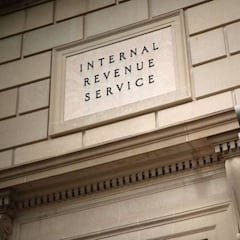What are contributory and non-contributory programs?
There exist a number of entitlement programs across the US to provide financial support to Americans that are either contributory or non-contributory.

The welfare system in the United States at the turn of the 20th Century was a patchwork of private initiatives and family networks along with state and local programs. However, the Great Depression laid bare the inadequacies of the arrangement and the need for a coherent system.
The passage of Social Security Act of 1935, established old age benefits through the Social Security Administration, unemployment insurance and financial support for single mothers. These were entitlement programs to ensure the welfare of Americans, greatly reducing the financial hardship for the elderly, children of single parents and those out of work.
Also see:
Additional programs to expand the social safety net were created in the years following to cover education, childcare and healthcare, among other things. These programs are divided into two categories contributory and non-contributory entitlements. Spending on them accounts for roughly 51 percent of all federal spending, the ‘big three’ of Social Security, Medicare and Medicaid represent about 48 percent alone according to Forbes.
Contributory entitlement programs
Entitlements such as Medicare, Social Security and unemployment compensation are “forced” contributory programs. All Americans are required to participate in the programs through contributions taken from their wages, and in order to qualify beneficiaries must have contributed to the programs.
Prior to Social Security benefits, the elderly faced the prospect of living out their remaining years in destitution once their savings had expired if they could not rely on family or friends. According to analysis by the Center on Budget and Policy Priorities, all things being equal almost 38 percent of elderly Americans would be in poverty today without the federal old age financial support. Prior to the covid-19 pandemic only 9.7 percent had income below the federal poverty line.
#DYK If you and everyone in your household are applying for or already receive SSI payments, Social Security will help you complete the SNAP application by phone? Learn more here: https://t.co/Jp9pzJNbQO
— Social Security (@SocialSecurity) April 4, 2022
Non-contributory entitlement programs
Regardless of their work history, qualifying Americans can receive benefits from non-contributory entitlements. These programs are targeted at low-income individuals and households, mainly dependent on the participants level of income, but other factors are taken into account.
Related stories
They offer basic support for housing, nutrition and medical support, among other things, forming a social safety net to support Americans that have fallen on hard times, keeping them out of poverty. Although they are federal programs, many are managed by the states, resulting in different thresholds to qualify across the US.
These programs include the Earned Income Tax Credit, designed to provide financial support to working Americans, Housing Assistance, to ensure families have shelter; Medicaid and CHIP, providing healthcare; Pell Grants, to support students financially; the Supplemental Nutritional Assistance Program (SNAP), financial support to buy healthy food; and Supplemental Security Income, financial support for low-income eldery, blind or disabled Americans.


